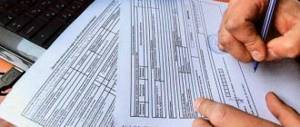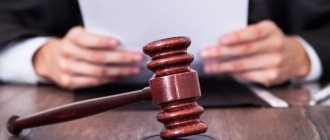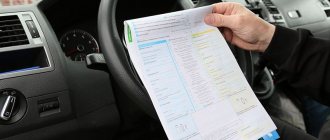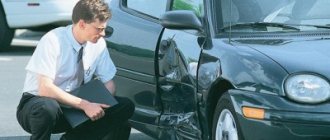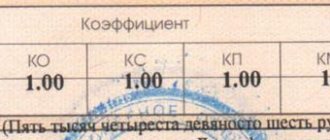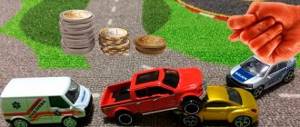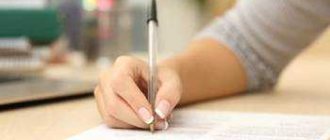Traffic regulations define pedestrians as full road users. If the driver does not give the pedestrian priority or hits him, he will be subject to administrative or criminal penalties. The current legislation is trying in every possible way to protect the rights of people crossing the roadway, because they are the most vulnerable road users. As a rule, it is the pedestrian who is most often seriously injured in an accident. And in some cases they turn out to be incompatible with life.
The insurance company of the person responsible for the accident pays the damage to the victim. To do this, the motorist must have a compulsory motor liability insurance policy. Moreover, the victim receives compensation regardless of the nature of the injuries and their severity. Any damage incurred as a result of the accident is compensated. Moreover, you can receive not only reimbursement of funds spent on treatment. Expenses for the period during which the victim was unable to work are also paid.
The pedestrian will not receive compensation only if he himself is the culprit of the accident. In such situations, a citizen may be required to pay the costs of the driver whose vehicle was damaged in the accident.
There was an accident with a pedestrian: what to do?
An accident involving a pedestrian is the most unpleasant situation for a motorist. Moreover, an accident can occur even if the driver complied with the speed limit and did not violate traffic rules. Most often, pedestrians get into accidents when they want to cross the road in the wrong place.
If it was not possible to avoid a collision with a pedestrian, the motorist must do the following:
- Stop the car and turn off the engine. It is necessary to turn on the hazard warning lights and place a corresponding sign on the road.
- The pedestrian must be given first aid. It should be moved or removed from the roadway so that it does not fall under the wheels of other vehicles.
- We call traffic police officers and an ambulance to the scene. Even if the pedestrian refused medical help, an ambulance must be called.
- Wait for the inspectors to arrive. The motorist has no right to leave the scene of the accident. This is allowed only in one case, if the driver decided to take the victim to the hospital himself. Then he is obliged to return to the scene of the accident as soon as he is free.
- Take photos and videos of the accident scene. This is especially important if the car of a participant in an accident interferes with the passage of other vehicles. Then the driver must photograph the car and all road objects directly related to the accident. After this, the car must be removed from the roadway.
- Talk to witnesses. It is necessary to record the details of each eyewitness to the accident. Their evidence in court will allow the motorist to avoid punishment if the accident occurred due to the fault of a pedestrian.
- Contact your insurer and lawyer. This stage is not specified in the traffic rules, and therefore is not mandatory. However, an experienced lawyer will allow the driver to avoid punishment or achieve a reduced sentence.
Compensation for health damage in case of an accident to a pedestrian
If a pedestrian was injured as a result of a traffic accident, this does not mean that the driver of the vehicle is 100% to blame. That is, the driver cannot always be held accountable.
At the same time, paragraph 1 of Article 1079 of the Civil Code of the Russian Federation indicates that the owner of the source of increased danger, and the car is such, is liable regardless of whether he is guilty of the incident or not.
It should be borne in mind that the driver of the vehicle is not always its owner. That is, the driver may have all the legal grounds to drive a car, however, he may not be its actual owner.
In this case, the driver will be held responsible, since the owner has given him the legal right to drive.
If the driver of the vehicle did not have legal grounds to drive the vehicle, but he was driving the vehicle with the permission of the owner, then the owner of the vehicle will be responsible for the damage caused as a result of the traffic accident.
The same rule applies to driving vehicles by a hired driver. In the event of an accident, the responsibility for compensation for damage will be assigned to the owner of the vehicle, who is the employer.
However, there are circumstances that allow the owner of the vehicle not to be held liable for damage caused as a result of an accident:
- the harm occurred as a result of force majeure;
- the harm was caused as a result of the malicious intent of the victim himself;
- the car was stolen. In this case, responsibility for the harm caused to the victim rests with the hijacker.
The basis for compensation for harm caused to the life, health or property of the victim as a result of a traffic accident is an official document issued by the traffic police service about the accident.
At the same time, in order to justify the amount of damage caused to the victim, it is necessary to provide a number of documents.
Their list depends on the type of harm caused to the victim:
- property;
- moral;
- harm to health.
Proving property damage is not particularly difficult, since property has its own value, degree of wear and tear, and can be assessed at any time period. This is provided that the property, despite the damage, has survived.
If it was completely destroyed, then a completely different approach to determining the damage caused is applied, since it will only be necessary to determine its value at the time of the traffic accident.
To compensate for property damage, you will need to submit the following documents:
- confirming ownership of property;
- opinion of an expert or relevant specialist on the amount of harm caused;
- bank document confirming payment for the services of an expert or specialist;
- a document confirming payment for transportation services, transportation of property to the place of its storage or for repair;
- documents confirming the costs of restoration or repair of property.
If, as a result of a traffic accident, harm is caused to the health of the victim, then compensation is subject to:
- lost wages or other income during the period of treatment of the victim. It should be borne in mind that the income that could have been received by a victim working under an employment or civil law contract, as well as an individual entrepreneur from engaging in his or her type of activity, is also subject to compensation;
- costs associated with treatment. Such expenses include the purchase of medicines, improved nutrition, sanitary care, and restoration of health in a sanatorium.
You should know that these expenses must be documented. If some services were provided to the victim at the expense of the state free of charge, then only the state has the right to demand compensation from the perpetrator.
To substantiate his claims, the victim must provide:
- a certificate of the average monthly salary or other income, including pensions, scholarships, benefits;
- conclusion of a medical commission on the degree of disability, both general and professional;
- an extract from the medical history on the prescription of medications and official documents on their purchase;
- documents confirming the costs of purchasing food, sanitary care or sanatorium treatment.
It happens that a pedestrian dies as a result of a traffic accident. In this case, it is quite difficult to calculate the amount of damage caused, since the circle of persons to whom monetary compensation should be paid must first be determined.
In Article 1088 of the Civil Code of the Russian Federation, this category of persons includes everyone for whom assistance from the deceased was a source of livelihood. These are minor children of the deceased, relatives who are disabled, as well as other persons specified in this article.
All of them must submit documents that would confirm that the deceased was their breadwinner and they were dependent on him.
Such documents may include certificates from an educational institution, medical documents on health status, and documents confirming close family relationships. Expenses incurred in connection with the funeral of the deceased are also subject to compensation.
As a result of a road traffic accident, not only material damage is caused to the victim, but also moral harm, which is physical and moral suffering.
In order to prove the infliction of moral damage, it is enough to prove harm to the life and health of the victim. That is, if the fact of causing harm to the health of a pedestrian is proven, this automatically means that he also suffered moral harm.
The amount of monetary compensation to compensate for moral damage caused is determined by the court, depending on the claims of the victim, the seriousness of the physical harm to health, as well as the consequences for the victim.
Who pays compensation for damage to health in an accident, the culprit or the owner? How to recover damages to health from the culprit of an accident through the court, read here.
Find out how to recover moral damages for personal injury in an accident at the following link:
Features of registration of an accident
Traffic police officers are required to record all the circumstances of the accident. However, the motorist must also take photos and videos of the accident scene. You should pay attention to the following nuances:
- position of the car and pedestrian after a collision;
- tread marks on the asphalt;
- damage caused to the car as a result of a collision;
- the condition of the road surface at the scene of the accident (part of the blame can be placed on the road services).
In the settings of your phone or camera, you need to set the function to display the current date and time on photographs.
Harm to health
If a person was injured during an accident, the perpetrator is obliged to compensate him for moral damages, as well as harm to health.
These include:
- compensation for income lost during illness;
- payment of the cost of medical care;
- payment of the cost of food for the patient and his family members;
- carrying out sanitary-resort treatment.
The list may expand depending on the amount of damage caused to human health. If, as a result of an accident, the victim becomes disabled, then the perpetrator is obliged to support him for the rest of his life.
The perpetrator is obliged to compensate only actual damage. For example, if medical care was free, then the victim will not receive compensation for it.
What to do if you get into an accident without insurance and are not at fault?
Read here what to do if the loaned car is involved in an accident and cannot be restored.
Is it necessary to do a technical inspection after an accident? Read the link:
Please note! However, the Territorial Division of the Compulsory Health Insurance Administration has the right to recover from the convicted person the amount spent on treating the patient in accordance with the state program for the provision of free medical care. Everything is taken into account: from the cost of bandages and cotton wool to the costs of operations.
To receive compensation, the victim must provide the following list of documents:
- extract from the patient's medical history;
- receipt for payment for treatment services provided;
- conclusion from a medical organization about loss of ability to work;
- documents confirming the income of the victim;
- any papers that can confirm the costs incurred for recovery from injury.
The total amount of compensation is determined by complete addition. The insurance company only pays part of the amount.
Compensation for damage
If the driver is found guilty of an accident, he will have to pay the victim the following types of compensation:
- For damage to property. If, as a result of a collision, a person’s clothing is torn or a mobile phone is broken, then the cost of these things will have to be reimbursed.
- For harm to health. This includes compensation for funds spent on treatment, as well as payments for temporary disability. For example, if as a result of an accident a citizen was unable to work for some time, then all lost profits are compensated by the person responsible for the incident.
- For moral damage. Such compensation can only be demanded through the courts.
- A one-time payment in the event of the death of the victim.
How does the refund work?
The procedure for obtaining compensation for harm involves collecting the necessary documents and contacting the insurance company with which the perpetrator took out the policy.
What needs to be done to receive payment?
First of all, the pedestrian must contact a medical expert who will examine the victim and give his opinion on the severity of the injuries. After this, it is necessary to issue a certificate of temporary incapacity for work if the damage is such that the person cannot work fully. Next, you need to assess the damage caused to the pedestrian’s property.
Required documents
The basis for payment of funds is an application to the insurer, which indicates:
- Company name and address.
- Information about the victim and the perpetrator.
- Circumstances of the accident.
- The amount of damage caused.
- The demand for compensation itself.
- Details for transferring funds.
- List of attached documents.
- Date and signature of the applicant.
The application is accompanied by a certificate of the incident from the police, expert opinions, checks and receipts for the purchase of medications, and a certificate of incapacity for work.
If the pedestrian died, a death certificate, a certificate confirming the relationship and that the applicant was fully supported by the deceased will be required. Documents may be submitted in the form of certified copies.
Procedure and terms for receiving money
After receiving the package of documents, the application is considered by the insurance company. The decision must be made within twenty days from the date of receipt of the application.
Funds are transferred to the applicant's current account or issued through the insurer's cash desk. According to the rules of Article 1088 of the Civil Code of the Russian Federation, in the event of the death of a pedestrian, compensation can be received by:
- persons who were dependent on the deceased;
- the pedestrian's child born after his death;
- one of the parents, spouse or other family member who does not work and is busy caring for his children, grandchildren, brothers and sisters who were fully supported by the deceased, under fourteen years of age or older than the specified age, but according to the conclusion of medical authorities, in need of outside care for health reasons ;
- persons who were supported by the deceased and lost the opportunity to work for five years after his death.
One of the parents, spouse or other family member who is not working and is caring for the children, grandchildren, brothers and sisters of the deceased and who becomes disabled during the period of care, retains the right to compensation for damage after the end of care for these persons.
A pedestrian who was injured in an accident has the right to receive compensation under compulsory motor liability insurance. Even if the driver does not have a policy, the damage must be compensated in full. In any case, you should call the police and record the incident.
How to receive compensation under compulsory motor liability insurance
To receive payments under compulsory motor liability insurance, the victim must have the following documents:
- protocol;
- certificate of accident.
Both documents are drawn up by traffic police inspectors who arrived at the scene of the incident. The report contains the name of the culprit's insurance company and his insurance policy number. These details should be used to receive compensation.
If a pedestrian received serious bodily injury in an accident, the driver will face criminal penalties. Accordingly, the victim will have to submit a resolution to the insurance company to initiate criminal proceedings.
While the victim is being treated at the clinic, his relatives can contact the insurance company’s office and find out what documents should be prepared to receive compensation. This approach will save time.
If a motorist requires treatment as a result of an accident, he should keep all receipts confirming the expenses incurred. These may be receipts for payment for procedures, documents confirming the cost of treatment and accommodation in a sanatorium, etc.
Compensation under compulsory motor liability insurance for damage to health is up to 50 thousand rubles. If this amount is not enough for a person, he has the right to demand the rest of the funds from the person responsible for the accident. If the driver refuses to pay voluntarily, he should go to court.
Compensation under OSAGO
In accordance with current legislation, the owner of the car bears responsibility for a traffic accident in which a pedestrian is injured. If he has an auto insurance policy, the insurer compensates the losses to the victim.
The maximum payment amount is provided for by the Federal Law “On Compulsory Motor Liability Insurance”. It amounts to:
- 400 thousand rubles for damage caused to property;
- 500 thousand rubles for damage to health (life).
If these funds are not enough to cover all losses, the missing amounts are recovered from the culprit of the accident in court. This is provided for in Article 1072 of the Civil Code of the Russian Federation.
To contact the insurance company you will need:
- application in the prescribed form;
- identification card (usually a civil passport);
- documents related to the accident;
- consent of the guardianship authorities to receive payments to victims who have not reached the age of majority.
You may also need other documents, the need for which can be obtained from the insurer over the phone. The application must indicate bank details for transferring funds.
The insurance company has the right to consider the application within 20 days from the date of receipt.
What to do if the accident was caused by a pedestrian
Often an accident occurs as a result of a pedestrian’s inattention or disregard for traffic rules. If the motorist manages to prove his innocence, he will not have to compensate for the damage suffered by the pedestrian. Moreover, the court may oblige the latter to pay the driver for repairs to his car.
When a pedestrian is at fault for an accident, the driver is exempt from paying fines and cannot be prosecuted. Moreover, the outcome of the accident does not matter. If a pedestrian died due to his own negligence, the driver should not be held responsible for it.
Who is responsible for damage caused in an accident?
When a traffic accident occurs, the person responsible must compensate for the damage caused. If the car is insured and the driver has an MTPL policy, then the insurance company does this for him. The amount of payments depends on the amount of damage, as well as on the number of people injured in the accident.
If a person was injured during a traffic accident, the driver of the car is found guilty. The rule was approved by Article 1079 of the Civil Code of the Russian Federation. It doesn’t matter whether the pedestrian was following the rules or not, the culprit will always be the one who was driving.
This rule has been adopted since a vehicle is an instrument of increased danger. When managing it, more responsibility falls on the person. Consequently, the motorist is responsible for the incident.
If, when an accident occurs, the vehicle was driven by a person who does not have a license, then the actual owner becomes guilty.
The owner of the car must be responsible for all persons who drive the car. He should not trust the vehicle to someone who drives it poorly.
If the accident involved a car registered to the company, then it will be the company, and not the driver of the car, who will compensate for the damage. All claims are addressed to the head of the organization. An investigation is conducted within the company, and if the driver is at fault for the accident, a fine is imposed on him in accordance with the liability agreement.
Important! If the employee and the company have not entered into an agreement on financial liability, then the organization does not have the right to recover funds from him for causing damage. However, it may impose a fine for violation of clauses of the employment contract.
If it is not the owner who is driving the vehicle, it is difficult for the owner of the car to avoid liability.
However, there are some moments when it is possible not to pay bills if you prove that:
- The accident occurred in an insurmountable situation, for example, during a hurricane or natural disaster;
- if the accident occurred due to the fault of traffic police officers;
- if the accident occurred due to the fault of a pedestrian, for example, he himself jumped under the wheels;
- if the accident occurred due to the fault of another driver during a mass accident;
- if at the time of the traffic accident the car was driven by a thief, and the car is on the wanted list.
Thus, if you prove your non-involvement in the accident, then it is quite possible to avoid liability.
Attention! Our qualified lawyers will assist you free of charge and around the clock on any issues. Find out more here.
What documents need to be submitted to the insurance company?
If a person dies as a result of an accident, compensation can only be obtained after his funeral has been organized. The general list of documents should include papers indicating payment for funeral services.
When a family breadwinner dies in an accident, his relatives must prepare the following documents:
- a copy of the death certificate;
- a statement with information about family members of the deceased;
- certificate of disability (if among relatives there are persons with a similar status);
- birth or adoption certificate (for children under 18 years of age at the time of the accident);
- a document confirming that a relative of the deceased is studying at an educational institution;
- certificate of income of the deceased;
- a certificate from the social security authority confirming the fact that one or more relatives of the deceased need care;
- bank details for transferring funds;
- certificate of accident;
- protocol drawn up by the traffic police inspector.
Damage caused to the health of a pedestrian
Damage caused not to property, but to the health of a pedestrian, is financially compensated in the following cases:
- Compensation for the amount of earnings that the pedestrian did not earn while eliminating health problems received in a traffic accident;
- Compensation for other potential income of the pedestrian (in his own private enterprise and other things) that he did not receive while dealing with the elimination of health problems received in a traffic accident;
- Compensation for the cost of treatment (hospital stay, consultations with specialists, medications, etc.) required as a result of DBT;
- Other additional expenses that the pedestrian incurred after the accident;
Read about penalties for causing grievous bodily harm in an accident here.
To obtain compensation for one of the reasons listed above, the pedestrian (or his legal representative) needs to prepare the following list of documents:
- Documents confirming that the person actually lost potential earnings while spending time restoring his health (certificate of income from accounting, etc.);
The certificate must be certified by an authorized person from the place of work. No one took your word for it how much you earn and how much you lost in an accident.
- Documents confirming the specific degree of harm to health in a traffic accident (medical reports, certificates, etc.);
- Documents (checks, receipts) confirming the purchase of medications, treatment in a private clinic and other expenses incurred as a result of an accident, required to restore health;
Driver's administrative responsibility
It occurs both in the case of an accident due to the driver’s fault, and in the absence of consequences of the violation.
No accidents
For a simple violation - failure to allow a pedestrian to pass - the driver will face liability under Article 12.18 of the Administrative Code with a fine of 1,500 to 2,500 rubles.
This is the case when there was no accident involving a collision with a pedestrian - if the driver did not give way:
- at a crossing - the most common situation when the driver is liable in the form of a fine for a pedestrian,
- when turning at an intersection,
- when turning into adjacent territory,
- in all other cases when walking has the right of way.
Judicial practice in challenging a fine for a pedestrian.
If there is an accident involving a pedestrian
Here we are considering a case where the driver is at fault, and the pedestrian was injured, but not killed. And there are already two punishments for this offense, depending on what health consequences the accident led to:
- if, as a result of a collision with a pedestrian, he suffered minor harm to health, then a fine of 2500-5000 rubles or deprivation of rights for a period of one to one and a half years,
- if the damage is moderate due to the driver’s fault, the fine increases to 10-25 thousand rubles, and the term of imprisonment is up to 1.5-2 years.
How to distinguish the degree of harm as a result of an accident with an injured pedestrian is regulated rather chaotically by the notes to Article 12.24 of the Code of Administrative Offenses:
1. Minor harm to health should be understood as a short-term health disorder or minor permanent loss of general ability to work. 2. Infliction of moderate harm to health should be understood as a non-life-threatening long-term health disorder or a significant permanent loss of general ability to work by less than one third.
All decisions, rulings and rulings of the practice of the Supreme Court of Russia under Article 12.24.
Pedestrian death
If a person died during an accident, then the person responsible for the accident is obliged to compensate the damage to his relatives.
Compensation consists of two parts:
- covering the costs of burial of a person killed in an accident;
- payment of compensation to all family members who were dependent on the deceased.
Remember! Dependents are all persons who have lived at the expense of other persons during their lives. In accordance with Article 1088 of the Civil Code of the Russian Federation, children of the deceased may be recognized as such.
To receive compensation, dependents must prepare a complete package of documents.
These include:
- papers that can identify a person (passport, birth certificate);
- children's birth certificate (to confirm direct relationship);
- death certificate;
- a certificate from the state road safety inspection confirming the occurrence of an accident;
- papers about lack of own income;
- certificate from the educational institution;
- medical report on health status.
The list can be expanded depending on the relationship, the number of dependents, as well as the income of the deceased.
A dependent who has the right to receive compensation from the perpetrator is a person who lives at the expense of the deceased and does not have the opportunity to earn his own living. For example, a child, a disabled person, a mother, disabled parents, and the like.
To receive reimbursement for funeral expenses, you must provide checks, receipts, orders related to the purchase of expenses.
